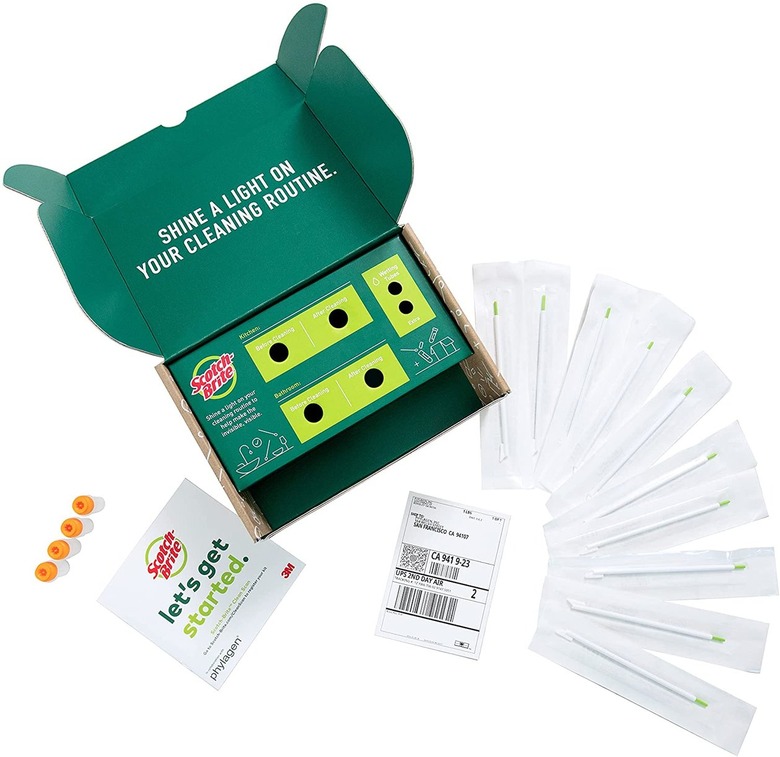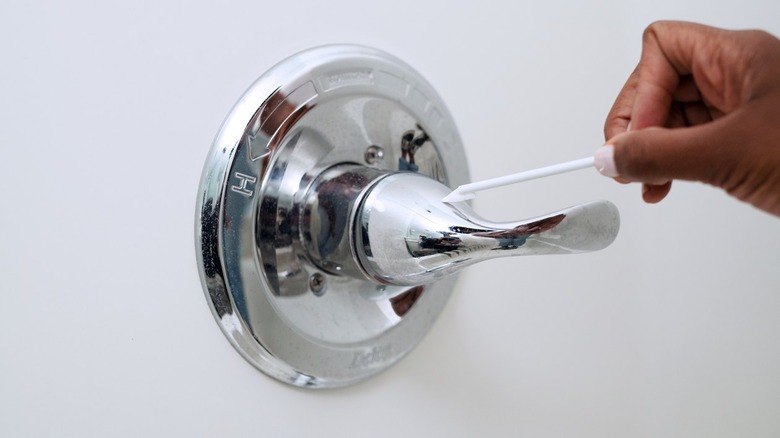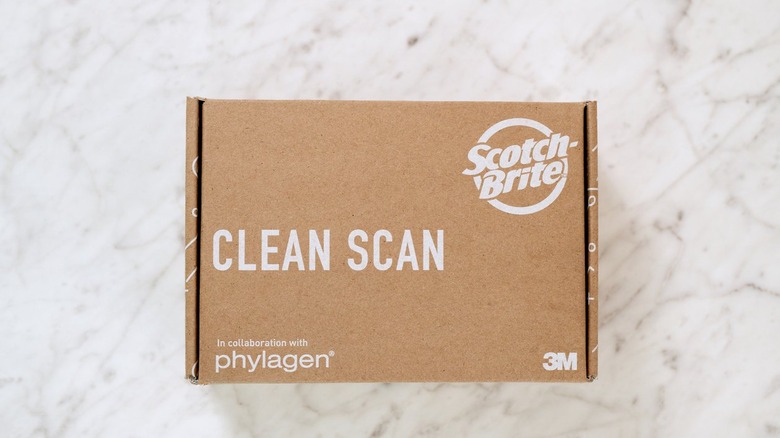I Didn't Know I Was Cleaning All Wrong — Until I Used This Cleaning Test Kit
We may receive a commission on purchases made from links.
Just like walking, talking, and chewing, I don't exactly recall the moment where anyone taught me how to clean. But, as it turns out, I've been doing the entire thing wrong for about 20+ years.
So, how exactly did I learn this? By using the Scotch-Brite Clean Scan, which is the world's first consumer home cleaning efficacy test. Essentially, it's a science experiment in a box that tests your grossest surfaces (spots in your kitchen and bathroom) for common molds and bacteria — both before and after a cleaning session.
Though the idea for the Clean Scan was floating around Scotch-Brite/3M before the pandemic, COVID-19 really accelerated the development pace, said Tom Portelli, 3M Scotch-Brite's Global Application Engineering Lead and a microbiologist by training.
"We really wanted to answer the question, 'What is in my home and on my surfaces?' and there wasn't any way for a consumer to know that," Portelli said. "We also wanted to take it a step past that: 'I've been cleaning for 30 years, but am I doing a good job?' We wanted to bridge that gap and give real data."
Scotch-Brite/3M partnered with Phylagen — a San Francisco-based biotech company that specializes in improving the microbial health of indoor spaces — to bring a cleaning efficacy test to the consumer, empowering them to know exactly what was lurking on their surfaces and how to improve their cleaning skills.
I got to try out the cleaning test in my very own home, filled with daycare germs and (spoiler alert) contaminated cleaning tools. Here's my honest review.
(While I did receive the Scotch-Brite Clean Scan in exchange for an honest review, all of the following thoughts and opinions expressed below are my own and are not influenced by Scotch-Brite, 3M, or Phylagen in any way.)
The Specs
The Specs
Each Scotch-Brite Clean Scan kit comes fully equipped with swabs to test your surfaces, four test tubes, a "wetting tube" filled with a testing solution, and a return address label so that you can ship your kit back for lab evaluation. Before you begin your testing, you'll need to register your kit at Clean Scan's website and enter your kit ID.
Though there are instructions in the box for how to conduct your cleaning test, there are also helpful hints on the Clean Scan site (useful for those of us who haven't participated in a science experiment since the early aughts). To perform the test, you simply grab a swab and swipe through the following areas:
- Two commonly used areas for preparing food
- The kitchen faucet handle, the oven handle, and the refrigerator handle
- The shower/bathtub drain and the underside of the toilet seat
- The bathroom doorknob, sink faucet handle, shower faucet handle, and toilet flush handle
After you've swabbed each area, you click the tab at the top of each swab and plop it in its respective "before cleaning" test tube. Once the initial swabbing is done, you clean as you would normally and then swab again in the same spots.
When everything is completed, you mail your kit back to the lab, and approximately three days after the lab gets the test, you'll receive your results and can view them on your Scotch-Brite Clean Scan account you set up.
These results will not only let you know how your cleaning compares to the rest of the test takers (yikes!), but also if your kitchen or bathroom has the presence of Aspergillus (a type of mold), bacteria, listeria, Influenza, or even SARS-CoV-2.
The Results
The Results
To my relief, my results revealed that my level of clean was average. Though my mold and bacteria quantities were slightly higher than the average household that's used the kit, it wasn't anything too scary like I imagined — especially since I have a child in daycare and a partner who's a teacher. My Clean Scan also didn't detect any fungi, fecal contamination, COVID, or Influenza, so I can reasonably assume that there is no illness hiding in our home for the time being.
Interestingly, however, my Clean Scan results indicated that my bacteria quantity went up significantly after I cleaned my kitchen. I asked Tom Portelli for his insights on this. Though he couldn't speak to the specifics of my cleaning routine, he indicated it was most likely either using contaminated cleaning tools or not washing my hands thoroughly before cleaning (guilty).
Another thing he mentioned? I could have possibly been using the wrong cleaning solution entirely. I have concrete kitchen counters (an extremely porous surface), and as it turns out, a classic kitchen disinfectant may not be cutting it.
"Stones or surfaces that have a lot of pores absorb microorganisms more easily and make it difficult for disinfectants. If you really want to choose [a cleaning solution] for very porous surfaces, you want to look for a soft surface sanitizer, like the Scotch-Brite One Step," advised Portelli.
In other words, we all need to be using fabric disinfectants on our porous countertops. Insert mind blown emoji.
All in all, this test taught me that I have some serious disinfecting work to do on my cleaning tools themselves, and that I need to slow down and take the time to thoroughly wash my hands before I clean a surface.
The Pros
The Pros
Overall, the Clean Scan was easy to use, and actually kind of fun. I felt like I was conducting a science experiment without worrying about what kind of grade I was going to make. When I got the results emailed to me, they were simple and definitely did not require a science degree to comprehend. They also included useful cleaning tips for eliminating the pathogens, bacteria, and molds that the kit specifically tests for, which will come in handy the next time someone in my household gets sick.
If you're someone who very much cares how clean their household is (someone who perhaps has an immunocompromised family member at home or who suffers from mold allergies), then I can see the Clean Scan being helpful in pointing out how you can improve upon your cleaning rituals. I can also see this as a thoughtful gift for the cleaning-obsessed person in your life, who would appreciate you helping them get to the next level in their cleaning routine.
The Cons
The Cons
Though the product itself is easy to use and can give you helpful information, at $250 this kit isn't going to be for everyone. If the Clean Scan perhaps included a second test where you could swab after you've implemented some new cleaning techniques, I could see it being more economical and useful for everyday life.
The interpretation of the results (which are located alongside your clean results), was also not personalized. I wish that I could have had more specific recommendations of what to do, for example, after I learned that I had more bacteria in my kitchen post-cleaning than I did before.
The Verdict
The Verdict
If it fits in your budget, the Clean Scan is absolutely a valuable tool to help you know what you don't know about your cleaning skills. In this era of being hyper aware of germs, the Clean Scan can provide you with some ammo against bacteria, viruses, and mold, which can help keep you and your household healthier year-round.


